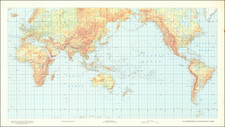Collecting Lunar Samples
This evocative photograph, designated AS16-108-17694, captures a mechanical arm capturing a sample from distinctive boulder from the Apollo 16 mission on the barren lunar surface. The detailed texture of the rock's façade is strikingly evident, with intricate patterns suggesting millennia of cosmic influences. The monochrome nature of the image accentuate the stark contrast between the moon's dusty terrain and the shadow cast by the boulder.
Within the historical context, the Apollo 16 mission was one of NASA's monumental efforts to explore the moon.
In the foreground, a scientific instrument extends towards the rock, indicative of the systematic research and collection processes the astronauts were engaged in
Crosshair marks, characteristic of lunar surface photography from the Apollo missions, punctuate the image, serving both as reference points and reminders of the precision with which these missions were executed.
The Apollo 16 mission, launched on April 16, 1972, was the tenth crewed mission in NASA's Apollo space program and the fifth to successfully land humans on the Moon. Commanded by astronaut John Young, with Charles Duke serving as Lunar Module Pilot and Thomas Mattingly as Command Module Pilot, Apollo 16 spent over 71 hours on the lunar surface, primarily in the Descartes Highlands. This mission marked the first time astronauts explored the highlands area, collecting over 200 pounds of lunar samples for analysis back on Earth. Apollo 16, as a critical part of the broader Apollo program, contributed significantly to our understanding of lunar geology and paved the way for future manned space exploration.












![[ Orbiting The Moon -- Apollo 13 Atlas ] Lunar Orbit Scientific Visual Observation Graphics for Apollo Mission 13 April 11, 1970 Launch Date](https://storage.googleapis.com/raremaps/img/small/68100.jpg)
![(Native American Photograph) [Cabinet card of Native American family, including man with head dress or war bonnet]](https://storage.googleapis.com/raremaps/img/small/93104.jpg)
![[ Spanish Flu -- Masks -- Armistance Day WWI ] The Unveiling of The Kaiser's Finish By Capt. J.F. Mora At Pittsburg, Calif, Nov 17th, 1918.](https://storage.googleapis.com/raremaps/img/small/99630.jpg)
![[Original photograph:] Alligator Head Point. La Jolla.](https://storage.googleapis.com/raremaps/img/small/82799.jpg)
